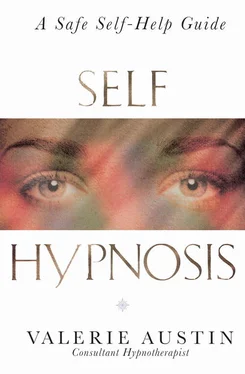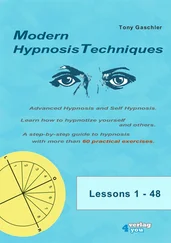Susceptibility in hypnosis has nothing to do with intelligence or trying too hard either way. The more someone is hypnotized, the more susceptible he or she becomes. Very susceptible people in hypnosis will still refrain from doing something that they find unacceptable. The grey area is that in hypnosis people may not have as many inhibitions as they would normally and may, therefore, be more daring.
WHY HYPNOSIS IS SO EASY TO LEARN
(Only fools laugh at what they do not understand!) To learn hypnosis takes only a few minutes. To understand why and how it works will take rather longer. If the basics are taught correctly, the learning is quick and easy because everything about the subject is fascinating. It is far simpler to learn than operating a computer. If you have any experience of computers, you will remember how difficult the manuals were to understand at first. That was not because the computer itself was difficult but because the manual’s explanations were at fault. A good basic training in any subject saves you hours of unnecessary hard work. Take away the unnecessarily difficult words that confuse the brain, interfering with retention and concentration, replace them with simple instructions, and you have a quick and easy new skill at your fingertips.
Hypnosis is a very easy subject to understand. Anyone with normal intelligence can be taught how to hypnotize or be hypnotized. Of course some hypnotherapy courses can be padded out to two years in length if they include study of psychology and the history of the subject, including its early masters such as Freud and Jung. Although this added information is quite fascinating it can end up being a bit too much, reminiscent of the old saying about ‘not being able to see the wood for the trees’.
Hypnotherapy can be split up into two basic categories: suggestion therapy, which is what is being taught in this book, and what I shall call advanced hypnotherapy, which is actually accessing the subconscious in therapy and communicating with it.
The techniques and methods can be taught in one to three weeks, depending on the degree of advancement. Any other length of time would only be necessary to show different techniques to come to the same conclusion. I have found that a 50-hour practical course is sufficient. If you want a comparison, this about the same amount of time necessary to qualify for a private pilot’s licence.
This is the most common belief of all—and the greatest fallacy.
You cannot be hypnotized against your will! You have to agree to it. But you can be caught off-guard. If any unacceptable suggestions were then made, you would nevertheless have the choice of either terminating the voluntary trance state or continuing with it. You can be persuaded or told to do something but you still are able to reason and you can still say ‘No.’ You are, after all, still awake, as mentioned earlier.
Unfortunately many books on the subject, and even some courses, may lead us to believe that hypnosis is not only complicated but dangerous. If this were true there would surely have been some legislation by now to weed out the unsavoury charactors who were abusing this most natural healing gift. The fact is, the only danger is that, if done incorrectly, hypnosis just will not work.
Many people have been mislead into thinking of hypnosis as ‘brainwashing’. The simple fact is that people who are being hypnotized just will not accept a suggestion in hypnosis that is damaging to them. In order to be brainwashed you need three vital ingredients: pain, drugs and hypnosis. Those who say they were made to do something by a hypnotist or hypnotherapist against their will, then they should eliminate the word ‘made’ and replace it with ‘conned’—and you do not need to be hypnotized to be conned. You always have a choice as to whether you are going to do what the hypnotist says or not.
Do not be persuaded into thinking hypnosis is dangerous, because it is not. A lot of the misapprehensions about hypnosis stem from ignorance, while some of them, it must be said, are spread by practitioners of hypnotism themselves. They fear that too many people will realize how natural a healing process hypnosis is, thereby taking away their importance as ‘miracle workers’—whether on stage or in healing. Although the hypnotist is well aware that it is the person in hypnosis who is accomplishing any act or change, unfortunately the hypnotist’s ego sometimes intervenes and halts the otherwise natural progress by shrouding in mystery the most natural self-healing gift known to humanity.
In order to have a good, working understanding of hypnosis it is helpful to have an insight into how the mind works in general. This can be explained very simply. You do not need to know about the elaborate, sophisticated workings of the mind; a basic explanation will be sufficient.
The mind is made up of two parts: the subconscious and the conscious. The subconscious part of the mind functions automatically. It is not the thinking part, it is the doer. Before the age of approximately five years old, our ability to learn is at its peak. All the information passed on to us from our parents, teachers, etc. goes directly to the subconscious, which files it away immediately. This is why if you tell a toddler that a wall is black when it is white the child will just accept this, where an older child would challenge you. As the child progresses another facility comes into operation: the conscious.
The conscious part of the mind acts like an editor of a newspaper, who chooses which stories will be carried in each edition, which will be filed away to use another day, and which can be discarded. There is only a certain amount of knowledge that can be held at any one time in the forefront of the mind to which the conscious has immediate access. When this forefront is fully occupied, any additional information coming through is stored away in the mind’s ‘filing system’. Just like the busy editor who has an assistant in charge of the filing, the conscious passes over control of the sophisticated filing system to the subconscious. And just as when the editor’s assistant is absent the editor may have problems finding a file, the conscious has no idea how to work the unfamiliar, complicated controls of the subconscious filing system.
Everything we have ever done, said, heard, smelled or seen is stored away, in fact. In hypnosis the subconscious can be easily accessed and the memories of an incident retrieved and looked at in detail. The police find this particularly useful in uncovering information—such as the record of a numberplate or the description of the face of an attacker—when victims’ or witnesses’ immediate, conscious memory has been erased by shock.
In my practice in Harley Street I often take clients back in regression (a term used to describe taking someone back in hypnosis to an earlier memory) to the time when they first walked as a child. They can see what they wore (sometimes just a nappy), what their parents were like and how they looked, even to describing their hairstyles and what they were saying. This shows how fantastic a system the brain is and how easy it is to retrieve information.
There are many obstacles preventing certain information being directly available to the conscious mind. Accessing the subconscious overcomes these obstacles immediately. Remember, the subconscious is the automatic part of the mind and will take orders. If you ask for a certain memory to be brought forward, it retrieves the required information as instructed. If the memory is attached to a trauma, the whole package comes forward.
By accessing data straight from the subconscious the information is not edited and, consequently, you may touch on a particularly distressing incident. This unhappy memory may cause the person in hypnosis to undergo what is called an abreaction . This means that he or she is in the middle of the emotion and may burst into tears. This outburst can sometimes be very exaggerated, due to the trance and the lifting of inhibitions. To the untrained it can be quite frightening and is another reason why hypnosis has for so long been rumoured to cause people actual mental or psychological harm.
Читать дальше












